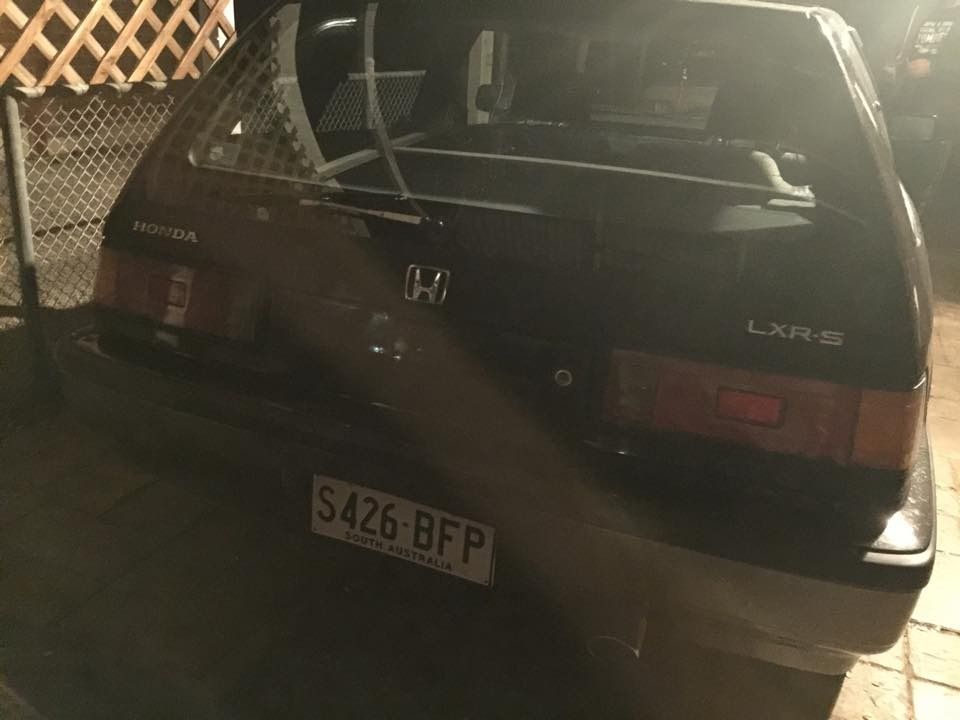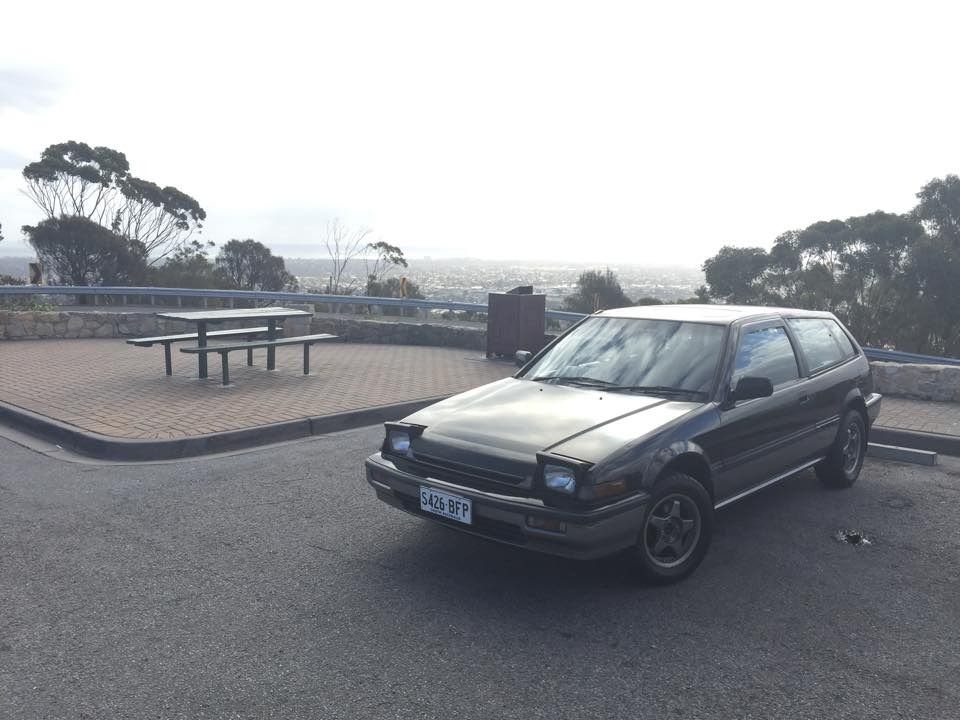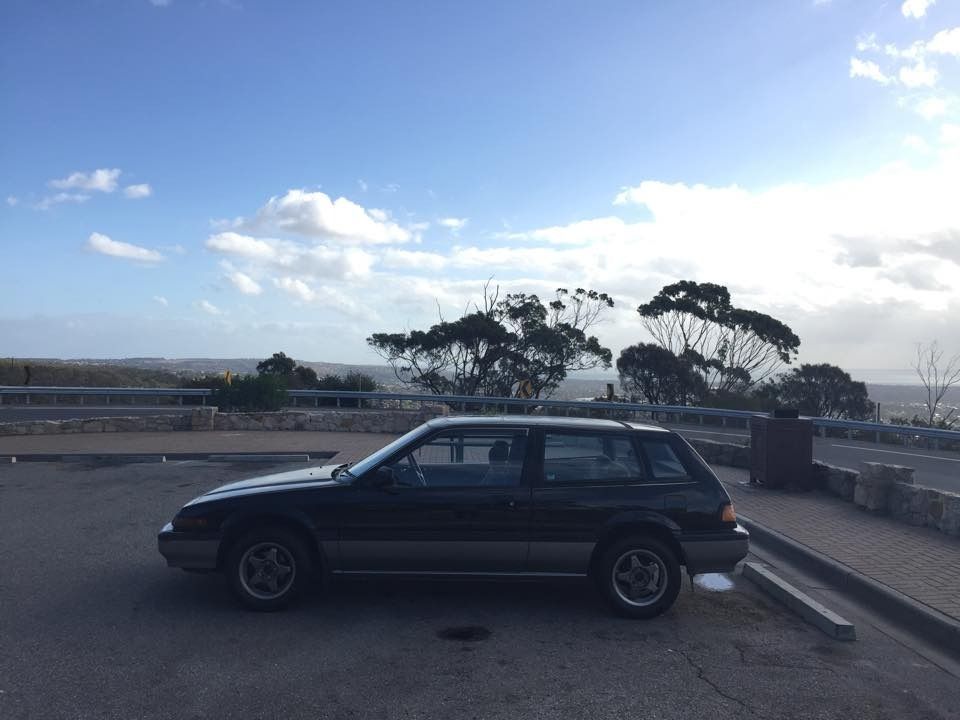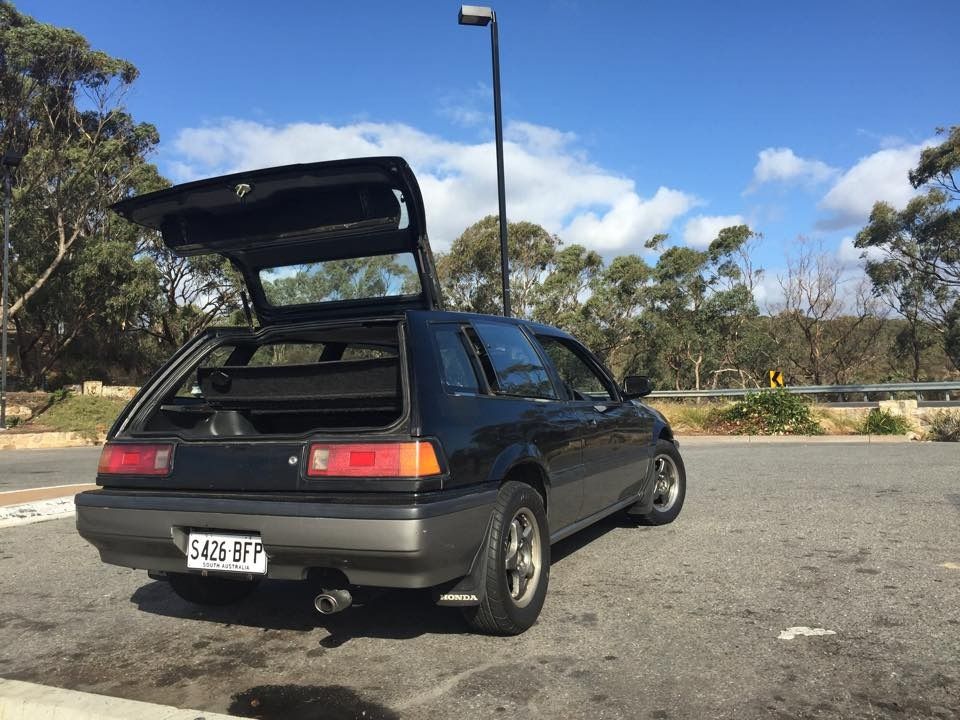|
-
~~ Forgot to mention. I went to the inspection center on Friday. Got there nice and early at opening at 8am as asked by the two people I spoke to on the phone earlier last week. Both said I could come down and get it inspected. Then the lady at the desk told me I had to first go to get an ID inspection because it's from a different state and then go to vehicle standards to get a list of what is required (ADRs) to pass inspection - which would be sent out by post and I'll get it a week or two. However I told her I was feeling confident and asked if I could go for an inspection. She said yes but to come back after the ID inspection.
I did the ID check, I passed. I rolled up and the guy was like "this is a weird looking car" and I laughed and thanked him. Then he said "I don't like weird" bahahaha :P
Then I went to vehicle standards and found that I was one ADR short. It was for side intrusion panels or something. So I drove to an engineer and it turns out I have the ADR but just needed the paper to say I have it and it complies. This piece of paper cost $350. I was outraged, but happily took it and left for my inspection. I got there and the lady said "sorry, you can't book a same day inspection. You can wait but you'll be behind 2 other people. It's extremely unlikely you will get in today"
Furiously I was about to flip all the lids but my dad walked in and calmed me down. After the 3 hours of jumping through hoops, I waited for another 5 before calling it quits. Booked for Monday which cost me $272 + $43 for an unregistered day pass.
Went in Monday. The car's temp gauge rose to 3/4 about 5 mins before arriving there (did about 20-30 mins of granny driving). I got there and some guy in the carpark pointed out my car was pissing out water. I got out and to check and 750ml had pooled around the wheels. I let it cool down and bought some cold water from a shop across he road and poured it in. Took it through inspection an hour later and passed by the skin of my teeth. The guy doing it said I have a rear brake line that looks like it's about to burst, a lower ball joint about to break and my tires (not my wheels) were sticking 10mm out the guard. But he took it for a drive and said it was one of the better cars he'd driven through his inspection career. So he gave me my exemption sticker and I am now officially registered !!!!!
TLDR; Car overheated, still passed. Woo ! Officially registered !

I did however encounter another overheat when I got home. I got out of the car and the overflow bottle was BOILING. AGGRESSIVELY. It was shaking and you could hear it ! It was HOT ! It started leaking out of the seals and dropped another 750ml ! Anybody got an idea ?
Thermostat was replaced bout 100kms ago, no visible splits in hoses, no milky residue in the oil. Going to replace it with coolant tomorrow and hope it helps us with troubleshooting (as there's only water in there now - which when taken out is BROWN)
Last edited by YOanthony; 24-03-2015 at 08:48 PM.
-
-
Did you bleed the system of air when you replaced the thermostat? You could have a big air lock (bubble) stopping the flow of coolant. The bleeder nipple is situated on top of the extension that the thermostat is at the end of, directly below the distributor. It faces back towards the firewall and is looks like a 12mm nut with a short "spout" where a stud would otherwise be. Unscrew it completely and clear the small passageway in it's seat with a piece of 1.5mm wire. Do the same to the bleeder, including the little hole in the side at it's tip. Water should come out of the hole it screws into. Screw the bleeder back in, but leave it loose a turn. Take off the radiator filler cap and fill it up. Start the engine and watch for water coming out of the bleeder, run the engine at about 1500 RPM until no more air is coming out (continuous water stream). Top up the radiator as you go if necessary. Shut the bleeder off while water is flowing out of it. Give your car some more road testing. If this doesn't cure the problem, I would say you've either got a blocked radiator or the water pipe across the back of the engine, or the pump isn't working. Take off the top hose at the radiator and run the engine to test the pump. Water should flow out very freely. Stop the engine before you empty all the water. If all OK and the problem continues, it's the radiator or that back pipe. Always use the correct anti-corrosive coolant once it's fixed after a flush out.
-
 Originally Posted by hondapop

Did you bleed the system of air when you replaced the thermostat? You could have a big air lock (bubble) stopping the flow of coolant. The bleeder nipple is situated on top of the extension that the thermostat is at the end of, directly below the distributor. It faces back towards the firewall and is looks like a 12mm nut with a short "spout" where a stud would otherwise be. Unscrew it completely and clear the small passageway in it's seat with a piece of 1.5mm wire. Do the same to the bleeder, including the little hole in the side at it's tip. Water should come out of the hole it screws into. Screw the bleeder back in, but leave it loose a turn. Take off the radiator filler cap and fill it up. Start the engine and watch for water coming out of the bleeder, run the engine at about 1500 RPM until no more air is coming out (continuous water stream). Top up the radiator as you go if necessary. Shut the bleeder off while water is flowing out of it. Give your car some more road testing. If this doesn't cure the problem, I would say you've either got a blocked radiator or the water pipe across the back of the engine, or the pump isn't working. Take off the top hose at the radiator and run the engine to test the pump. Water should flow out very freely. Stop the engine before you empty all the water. If all OK and the problem continues, it's the radiator or that back pipe. Always use the correct anti-corrosive coolant once it's fixed after a flush out.
I did not bleed the air when I did the thermostat.
Last night I bled the nipple and as soon as I cracked it I heard air expel out for about 5-10 seconds. You could hear it. I cleaned the nipple and where you put them nipple (as you said). The nipple was blocked. I then put the nipple back on and ran the car for a few seconds and had a constant stream of water come out. I tightened the nipple and that's it !
I hope this is the cause of the problem. Do you think I will need to do it again or once should be enough ?
I'll hold off from replacing the coolant for now until I can determine whether this has fixed my problem. It's interesting that this issue has never happened before. I drove the car to the inspection agency and did the exact same route twice before and had no symptoms. It ran like a champ... through peak hour too !
Thank you for your help 
-
 Originally Posted by YOanthony

I did not bleed the air when I did the thermostat.
Last night I bled the nipple and as soon as I cracked it I heard air expel out for about 5-10 seconds. You could hear it. I cleaned the nipple and where you put them nipple (as you said). The nipple was blocked. I then put the nipple back on and ran the car for a few seconds and had a constant stream of water come out. I tightened the nipple and that's it !
I hope this is the cause of the problem. Do you think I will need to do it again or once should be enough ?
I'll hold off from replacing the coolant for now until I can determine whether this has fixed my problem. It's interesting that this issue has never happened before. I drove the car to the inspection agency and did the exact same route twice before and had no symptoms. It ran like a champ... through peak hour too !
Thank you for your help 
Bleeding needs to be done after any emptying of the coolant from the system. What I omitted to mention is that the engine needs to be brought up to sufficient temperature that the thermostat opens, so that coolant is actually able to flow and move any air-lock up to the bleeder's position. While it's closed, there's minimal coolant movement. To make this easier for myself (not absolutely necessary), I made up a little tool out of a 1/4" drive deep 12mm socket, which I drilled a 6mm hole in, attached to a 1/4" drive screwdriver handle, so I could keep this in place on the nipple while doing this.
Don't replace the coolant with an anti-corrosive one until you've made sure that it's not overheating. See how it goes for the moment, you may have got the air-lock out with that release you heard. Seeing there was rusty water came out before though, it will still need a good flush through anyway. It's a bit of a drawn out process if the coolant's been allowed to become contaminated, requiring removal of the radiator and flushing it and the block independently to do a good job, but make sure the engine is cool when you do it. Never put cold coolant or water directly into a hot engine.
-
Did you install the thermostat the right way?
Did you use a Dayco one?
-
 Originally Posted by hondapop

Bleeding needs to be done after any emptying of the coolant from the system. What I omitted to mention is that the engine needs to be brought up to sufficient temperature that the thermostat opens, so that coolant is actually able to flow and move any air-lock up to the bleeder's position. While it's closed, there's minimal coolant movement. To make this easier for myself (not absolutely necessary), I made up a little tool out of a 1/4" drive deep 12mm socket, which I drilled a 6mm hole in, attached to a 1/4" drive screwdriver handle, so I could keep this in place on the nipple while doing this.
Don't replace the coolant with an anti-corrosive one until you've made sure that it's not overheating. See how it goes for the moment, you may have got the air-lock out with that release you heard. Seeing there was rusty water came out before though, it will still need a good flush through anyway. It's a bit of a drawn out process if the coolant's been allowed to become contaminated, requiring removal of the radiator and flushing it and the block independently to do a good job, but make sure the engine is cool when you do it. Never put cold coolant or water directly into a hot engine.
Thanks for the info. Luckily the system was warm (not hot - not cold).
I have not replaced anything yet. I will wait until I know the problem is fixed.  I took it for a short drive up a hill behind my house today. It performed well and did not overheat. I will make longer drives here and there and see how it goes I took it for a short drive up a hill behind my house today. It performed well and did not overheat. I will make longer drives here and there and see how it goes 
I have not before - but why is it bad to put cold coolant or water into a hot engine ?
Thank you again for your help 
 Originally Posted by Jasemas

Did you install the thermostat the right way?
Did you use a Dayco one?
Yeah a Dayco one. I installed it correctly 
-
-
Putting coolant or cold water into the engine while its hot
will warp the head 
-
 Originally Posted by Jasemas

Putting coolant or cold water into the engine while its hot
will warp the head 
Into an engine that is at boiling point will most likely crack either the head or the block because of the sudden local shrinkage of the metal contacted by the cold water.
-
Okay, thank you. I'll make a note not to do it.
Even with the air drained from the thermostat housing it has still had another meltdown. Not as serious as I caught it early. No water has boiled out but it has still become quite ferocious.
What should my next plan of action be ?
Pic for attention :3 I've posted this one specifically because both of the CD5s in this picture have been lowered 3-5 inches each yet the Aerodeck roof is almost in line with them.. I won't be dumping it, but imagine if it was... wow..

-
change head gasket or
K swap
 Posting Permissions
Posting Permissions
- You may not post new threads
- You may not post replies
- You may not post attachments
- You may not edit your posts
-
Forum Rules
|














Bookmarks